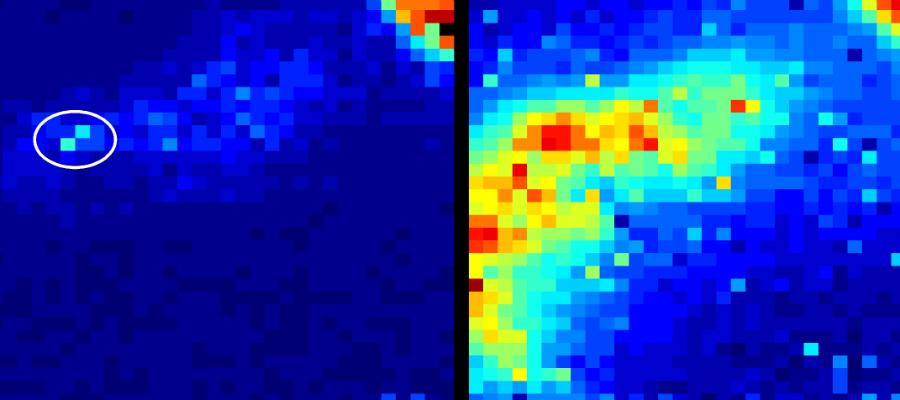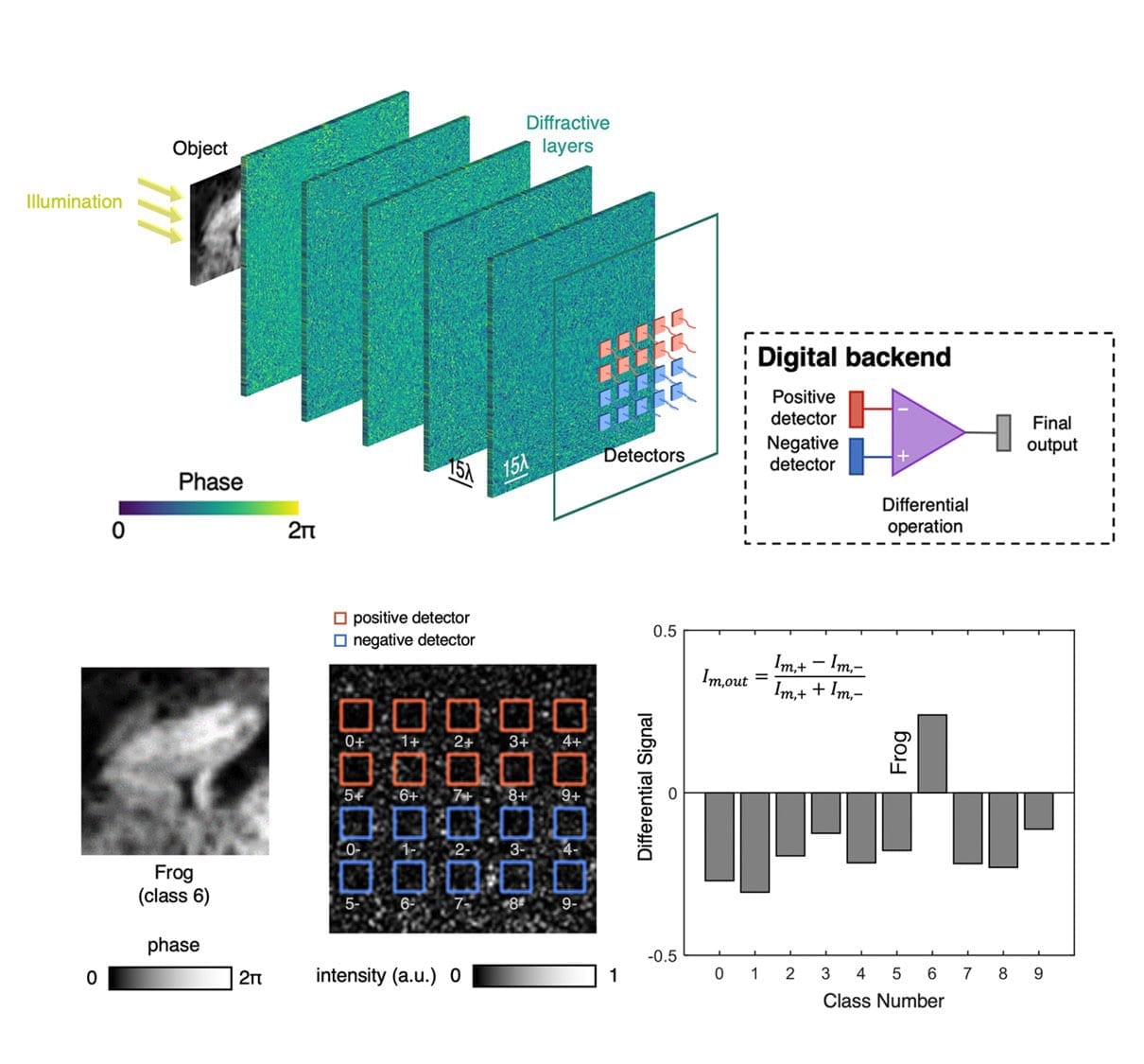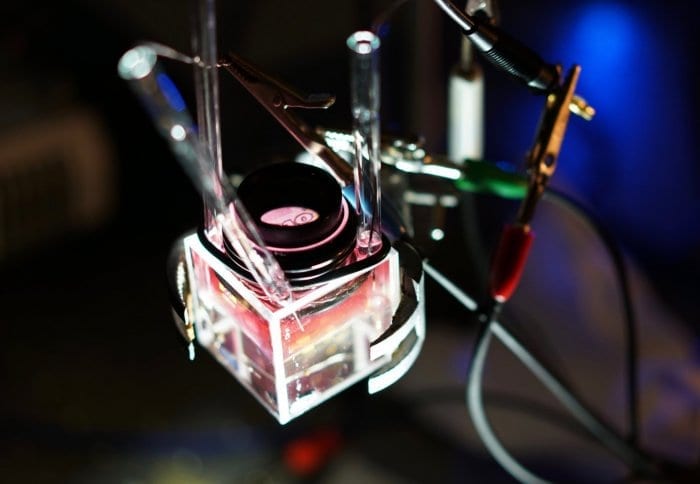
Scientists have developed a camera that can see through the human body.
The camera is designed to help doctors track medical tools known as endoscopes that are used to investigate a range of internal conditions.
The new device is able to detect sources of light inside the body, such as the illuminated tip of the endoscope’s long flexible tube.
Light detection
Until now, it has not been possible to track where an endoscope is located in the body in order to guide it to the right place without using X-rays or other expensive methods
Light from the endoscope can pass through the body, but it usually scatters or bounces off tissues and organs rather than travelling straight through.
This makes it nearly impossible to get a clear picture of where the endoscope is.
Advanced technology
The new camera takes advantage of advanced technology that can detect individual particles of light, called photons.
Experts have integrated thousands of single photon detectors onto a silicon chip, similar to that found in a digital camera.
Sensitive
The technology is so sensitive that it can detect the tiny traces of light that pass through the body’s tissue from the light of the endoscope.
It can also record the time taken for light to pass through the body, allowing the device to also detect the scattered light.
Bedside tool
By taking into account both the scattered light and the light that travels straight to the camera, the device is able to work out exactly where the endoscope is located in the body.
Researchers have developed the new camera so that it can be used at the patient’s bedside.
The ability to see a device’s location is crucial for many applications in healthcare, as we move forwards with minimally invasive approaches to treating disease.
Prototype
Early tests have demonstrated that the prototype device can track the location of a point light source through 20 centimetres of tissue under normal light conditions.
Proteus project
The project – led by the University of Edinburgh and Heriot-Watt University – is part of the Proteus Interdisciplinary Research Collaboration, which is developing a range of revolutionary new technologies for diagnosing and treating lung diseases.
Learn more: Medical camera sees through the body
The Latest on: Minimally invasive approaches to treating disease
[google_news title=”” keyword=”minimally invasive approaches to treating disease” num_posts=”10″ blurb_length=”0″ show_thumb=”left”]- Aitrasound® Medical Group Announces Completion Of A Pre-A Financing Round Of Nearly 60 Million Hong Kong Dollarson April 26, 2024 at 4:10 am
Launching New Brand Aitrasound® and an AI Medical Imaging Product Line HONG KONG SAR - Media OutReach Newswire - 26 April 2024 - Recently, Aitra ...
- Tiny Robotic Nerve “Cuffs” Could Transform How We Treat Neurological Conditionson April 26, 2024 at 2:00 am
Cambridge researchers have created flexible, minimally invasive devices that can wrap around nerves, offering new ways to treat neurological conditions and control prosthetics. Researchers have ...
- Heart Disease Newson April 24, 2024 at 5:00 pm
Safety of a Potential New Treatment to Manage Complications from Sickle Cell Disease Apr. 11 ... Trial findings suggest that the less invasive approach to heart bypass surgery offers comparable ...
- 2024 Report | European Biopsy Devices Market to Reach US$ 1,074.0 Million by 2032: Enhanced Focus on Early Disease Detection Fuels Growthon April 24, 2024 at 6:41 am
It is projected to grow at a CAGR of 5.99% from 2024 to 2032. The analyst forecasts it to reach US$ 1,074.0 Million by 2032. The increasing emphasi ...
- Medical Marvelson April 22, 2024 at 7:45 am
Veterans turn to the Richmond VA Medical Center for a variety of treatments to raise their quality of life. But sometimes, what a veteran really needs is something that doesn’t exist, like a way to ...
- Cervical cancer causes, treatment: Radiation therapy, with chemotherapy, is the best optionon April 21, 2024 at 8:20 pm
By emphasising effective prevention strategies, early detection initiatives, and the judicious application of available treatment modalities, the collective goal is to enhance the quality of life for ...
- Researchers develop new method to boost immune cells for fighting canceron April 20, 2024 at 9:23 am
“The whole class of drugs that are employed to jump-start the immune system to fight cancer cells has largely not yet succeeded. Our goal is to create novel solutions that allow researchers to test ...
- ESG Weight-Loss Procedure More Effective And Cheaper Than Ozempicon April 17, 2024 at 8:34 am
A new study in JAMA shows the cost of semaglutide would need to drop three-fold to equal ESG, a quick procedure that helps patients lose up to 18-20% of their weight.
- Elevating Metastatic Thyroid Cancer Treatment - Revolutionary Advances In Minimally Invasive Approachon April 17, 2024 at 7:00 am
Dr. Nayak is also the founder of MACS Clinic, a specialty cancer treatment clinic in Bangalore that offers evidence-based, comprehensive cancer treatment. He pioneered the Minimally Invasive Neck ...
- Know Everything About Breast Imagingon April 15, 2024 at 10:30 am
It involves various imaging techniques that help identify abnormalities, evaluate the extent of disease, and guide treatment decisions ... and stress related to breast health. Guiding minimally ...
via Google News and Bing News










